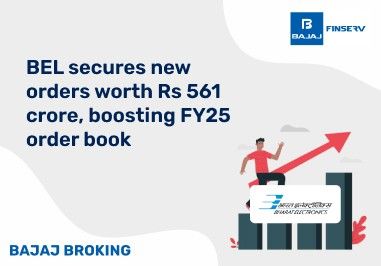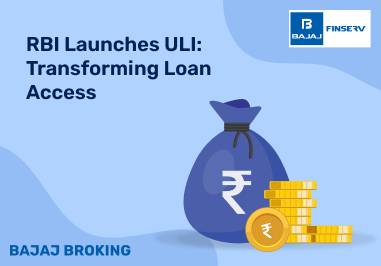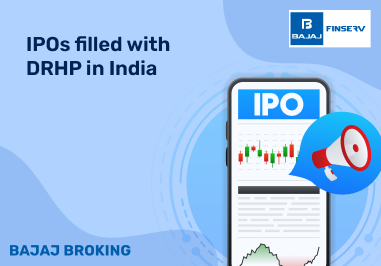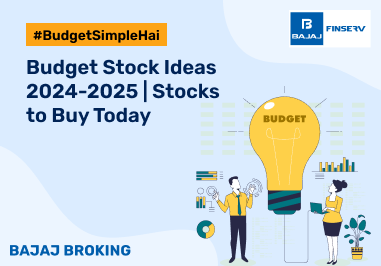BAJAJ BROKING
Laxmi Dental IPO is Open!
Open a Free Demat Account
Trade Now, Pay Later with up to 4x
Track Market Movers Instantly
From Struggle to Strength: The Economic Journey of India Post-Independence
The Indian Economy we know today has undergone massive changes over the years that make it not just an interesting read but an inspiring story. From being an economy that barely survived the economic crisis right after it gained independence from colonial rule to becoming one of the largest economies in the world, India has truly changed its fate over the past 7 decades.
You might already be aware of the current economic status of India, however, have you ever thought about how we reached here? What obstacles we had to overcome and how the government moulded policies to fight back the economic crisis?
As we get set to celebrate the 78th Independence Day, let’s take a walk through the evolution of the Indian economy from 1947 to 2024: A 77-year economic history that can be best understood through two major phases:
Pre Liberalisation Period
Post Liberalisation Period
Evolution of Indian Economy: Understanding the Major Highlights
Let’s begin with the pre-liberalisation period/the post-independence economy, which started in 1947 and continued until 1990.
Remodelling the Economy
Before the end of colonial rule, India was already facing a major financial crisis and had to deal with an empty Indian treasury. Around the 1700s, the Indian economy was contributing 22.6% of the world economy, reduced to 3.8% by 1952, showcasing the severe impact of colonial robbery the country had to deal with.
The journey of rebuilding the economy began in the 1950s with a straightforward approach of fueling the growth for rapid industrialization with a centrally designed 5-year plan. The focus on producing basic and heavy materials like steel, machines and tools, locomotives and so on helped the country build a foundation. Industry protection was offered to compete with foreign products.
Additionally, the lack of a private sector during this period forced the government to employ in the public sector. A massive milestone was marked with the opening of 14 national banks by 1964. All of this helped the country’s GDP reach ₹5,844.8 crores.
The Revolutionary Green Farming
India has always been an agricultural country with the scope of revamping its economy like no other. It was obvious for the government to focus on agrarian growth but with a futuristic approach.
This resulted in the adaptation of agriculture industrialization, in 1965- a brainchild of Lal Bahadur Shastri. This indicated a turn of agricultural practices by providing HYV seeds, quality pesticides and fertilisers along with the introduction of agricultural tools like tractors and threshers.
While this helped the income of farmers in Haryana, Punjab and Uttar Pradesh grow by almost 70%, the policy could not protect itself from controversies and a mild failure.
Looking at the Private Sector
The Green Farming revolution had its drawbacks, which stemmed mainly from overpopulation and lack of demand due to poor economic status. Industries were over-employed with no revenue generation which posed a threat to the economy. For instance- The Haldia Fertiliser Plant was established in 1970 and employed 1,500 people but the plant did not produce even an ounce of fertiliser due to lack of demand.
The ongoing problems made one thing clear- India needed to look towards the private sector. By the mid-1980s, the government started to slowly liberalise certain restrictions to generate employment.
The period between mid 1980s to 2002 brought some relief to the Indian Economy as the economy was growing 6% annually.
Let’s move towards the post-liberalisation period that started in 1991.
The Economic Liberalisation
India made LPG (Liberalisation, Privatisation and Globalization) reforms as its priority in 1991. Two key reasons that forced the government to bring LPF reforms were.
The inflation rate rose from 6.7% to 16.7%
Public debt and interest amounted to 36.4% of total government expenditure.
Here’s how the government planned on bringing LPG reforms:
Removal of the industrial raj
Reduction of taxes
Dilution of the role of the public sector
Market deregulation
Reduction in import tariffs
The Great Recession, 2008
While the LPG reforms helped India in increasing GDP rates and actively cutting down exports, the year 2008 came as a black spot for the economy.
The Great Recession had its impact on the Indian economy primarily in employment that pushed India back to a severe case of unemployment. For instance - The IT industry laid off around 5 lakh employees along with the automobile and textile industry cutting down their employment by 4.79% and 1.29%, respectively.
This phase made India realise the drawbacks of relying heavily on money put in by foreign countries to facilitate the country’s growth. A major step to overcome the losses of the Great Recession was taken by the RBI to cut down interest rates heavily to encourage people and businesses to borrow money and spend more.
The Demonetisation, 2016
Coming to the chapter, you probably were a part of- The Demonetisation, 2016. It was introduced as a measure to curb the circulation of black money and while it had positive results, demonetisation impacted the economy negatively by stopping the regular cash flow. The Indian economy is largely driven by cash transactions- an aspect that was probably not evaluated and slowed down the economy.
The Unfortunate Pandemic
Starting from 2020 to 2022, not just India but the world faced an economic burn as everything came to a stop. The pandemic, as much as it cost lives, had impacted the economy severely as well.
Studies show an estimated 400 million laid-offs along with key industries like travel, hospitality, tourism, transport and so on facing turmoil bringing a stop to India’s economic growth.
The Indian Economy Today
Economic reforms in India have helped the country build a US$3.7 trillion economy. The post-pandemic era has observed key developments in the fields of agriculture, infrastructure, skill development and education to boost the Indian economy. The GDP for 2020-2021 was at a growth of 9.5% indicating a positive future.
The 2024 budget is yet another reformatory approach to fuel sectors that can have the potential to bring huge profits like agriculture, infrastructure and manufacturing.
Wrapping Up
The Indian economy has seen everything that could have brought the country into the potholes but with proper economic policies and reforms, India emerged victorious in its true meaning. From being an economy that contributed only 3.8% to the world economy to making its place in the top 5 economies in the world, Indian economists, policy planners and entrepreneurs deserve all the praise.
Today, India has its wings spread in all sectors to channelise its sole goal of making India “Atma Nirbhar” or “Self Reliant”.
Disclaimer: Investments in the securities market are subject to market risk, read all related documents carefully before investing. This content is for educational purposes only. Securities quoted are exemplary and not recommendatory.
For All Disclaimers Click Here: https://bit.ly/3Tcsfuc
Share this article:
- Related Articles
- Top Articles

Gold Rate Today | 14 January 2025 | Gold Price in India
14 Jan, 2025 | 40 Min. read

HCL Tech expands partnership with Microsoft to transform contact centres
14 Jan, 2025 | 2 Min. read

BEL secures new orders worth Rs 561 crore, boosting FY25 order book
14 Jan, 2025 | 2 Min. read

ITI Ltd secures Rs 64 crore contracts for Wi-Fi and CCTV systems
14 Jan, 2025 | 2 Min. read

JSW Energy secures LoI for 3.6 GW KSK Mahanadi power plant
14 Jan, 2025 | 2 Min. read

Biocon Biologics’ Johor Bahru Facility Receives FDA VAI Classification
13 Jan, 2025 | 2 Min. read

Interarch Secures ₹221 Crore Projects in Semiconductors & Energy Storage
13 Jan, 2025 | 2 Min. read

DMart Appoints Anshul Asawa as CEO Designate, Succeeding Ignatius Noronha
13 Jan, 2025 | 2 Min. read

JSW Energy Completes ₹630 Crore Acquisition of 125 MW RE Assets
13 Jan, 2025 | 2 Min. read

Laxmi Dental IPO- Key Objective & Deep Analysis
13 Jan, 2025 | 4 Min. read

How to Apply for Sat Kartar Shopping IPO & Check Allotment Status?
13 Jan, 2025 | 1 Min. read

How to Apply for Kabra Jewels IPO & Check Allotment Status?
13 Jan, 2025 | 1 Min. read

RBI Launches ULI: Transforming Loan Access
August 27, 2024 | 4 Min. read

Textile Sector in India
September 20, 2024 | 5 Min. read

List of IPOs with DRHPs Filed
November 30, 2023 | 3 Min. read

Aditya Birla Group
September 28, 2023 | 10 Min. read

Bajaj Housing Finance Ltd IPO: Things Smart Investors Need to Know
September 05, 2024 | 4 Min. read

Budget Stock Ideas 2024-2025 | Stocks to Buy Today
July 24, 2024 | 4 Min. read

IPO Eligibility Criteria : Full Details
March 15, 2024 | 6 Min. read

What Is the Lock-In Period in IPOs?
October 18, 2023 | 6 Min. read

Godfrey Phillips Announces 2:1 Bonus Shares
September 16, 2024 | 7 Min. read

Jindal Group- A Comprehensive Analysis
September 27, 2024 | 7 Min. read
Read More Blogs
Our Secure Trading Platforms
Level up your stock market experience: Download the Bajaj Broking App for effortless investing and trading


